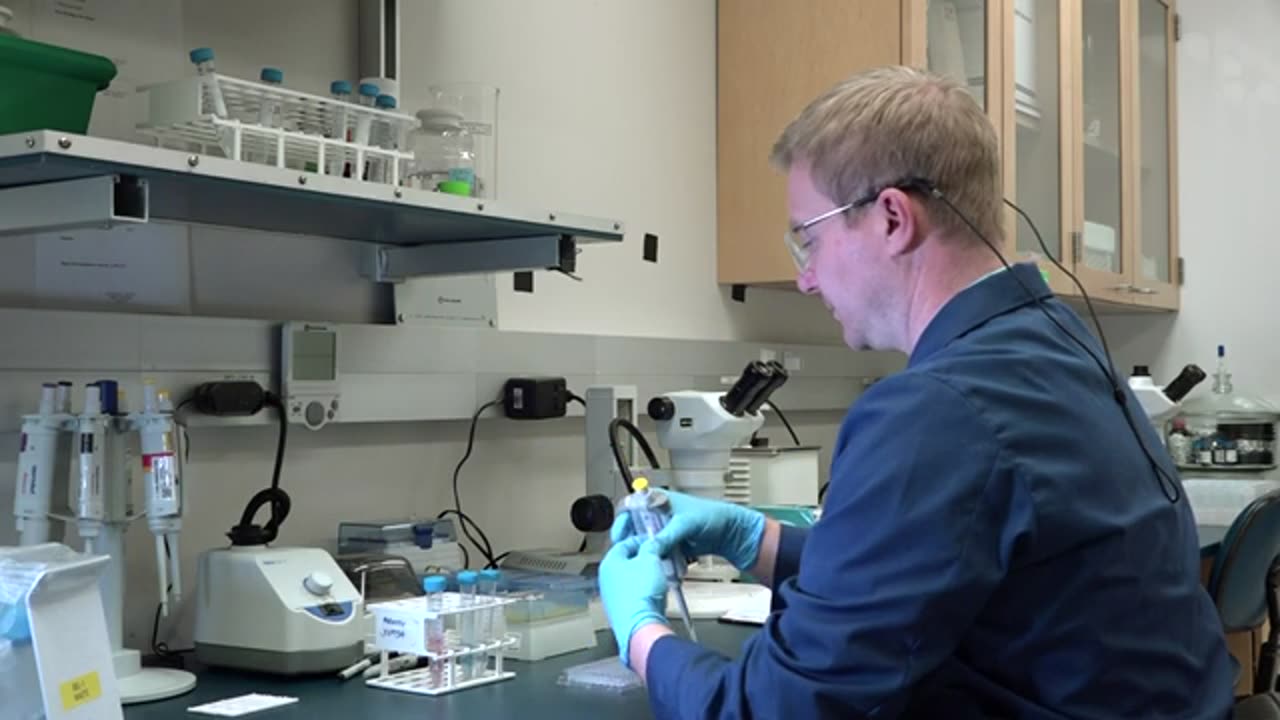Premium Only Content

Top 10 Coolest Army Science and Technology Advances of 2019
On-demand energy, self-healing materials, and smart robots are some of the top 10 coolest Army science and technology advances from 2019.
Read more... https://www.army.mil/article/231232/
This year has had its share of science and technology advances from Army researchers. The U.S. Army CCDC Army Research Laboratory, the Army’s corporate research laboratory, has the mission to discover, innovate and transition science and technology to ensure dominant strategic land power.
We've picked the coolest advances to showcase what Army scientists and engineers are doing to support the Soldier of the future with a Top 10 list from 2019:
No. 10: Artificial muscles made from plastic
Future Army robots will be the strongest in the world, if visionary researchers have their way. Robots could be armed with artificial muscles made from plastic. Army and academic researchers collaborated to study how plastic fibers respond when they are twisted and coiled into a spring. Different stimuli causes the spring to contract and expand, mimicking natural muscles. Artificial muscles could potentially augment robot performance, allowing our future mechanical partners to buff up, and pump more iron. https://www.army.mil/article/228077
No. 9: Monitoring Soldier health and performance with biorecognition receptors
Army and academic researchers are looking at how to monitor Soldier health and performance in real-time, by developing unique receptors. Future bioreceptors will be small, simple to produce, inexpensive, and robust to environmental stresses. https://www.army.mil/article/221184
No. 8: A water-based, fire-proof battery
Army researchers and their partners have developed a new, water-based and fire-proof battery. These aqueous lithium-ion batteries replace the highly flammable electrolyte in lithium-ion batteries, using a nonflammable, water-based solvent--and also using a lithium salt that is not heat-sensitive, allowing for batteries to be stored and used at a much broader range of temperatures.
https://www.army.mil/article/229601
No. 7: Generating power on-demand with hydrogen
Imagine if you could generate power on-demand, using just a tablet and some water. Army researchers are exploring potential applications for a structurally-stable, aluminum-based alloy that reacts with any water-based liquid to produce on-demand hydrogen--generating power without a catalyst. https://www.army.mil/article/224584
No. 6: 3-D printing ultra-strong steel
A team of Army researchers have developed a way to 3-D print ultra-strong metal parts, by adapting an alloy originally developed by the Air Force into powder form. With a method called Powder Bed Fusion, a 3-D printer’s laser selectively melts the powder into a pattern. The printer then coats the build plate with additional layers of powder until the part is complete. The end result is a piece of steel that feels like it was forged traditionally, but has intricate design features that no mold could create, and is about 50% stronger than anything commercially available. https://www.army.mil/article/217861
No. 5: Human interest detector
Have you ever wanted to get inside a Soldier's head? Army researchers have developed a human interest detector that can determine where people are looking and decode their brain activity. By monitoring brainwaves, researchers track neural responses and assess what captures a Soldier’s attention among a myriad of stimuli in threat environments.
No. 4: Artificial Intelligence to identify fuel-efficient materials
A new system of algorithmic bots could tackle the most complex challenges beyond human experimental capabilities. Army-funded researchers developed a system called CRYSTAL to explore new materials for long-lasting power for Soldiers. CRYSTAL relies on a collective of algorithmic bots that sift through hundreds of thousands of combinations and elements--a number so vast that it’s inaccessible through traditional experimentation. https://www.army.mil/article/225351
No. 3: Robotic arrays for directional communication
An Army team has developed a new way for Soldiers to communicate in complex environments, with small robots that will use AI to self-organize into the array that is needed for optimal radio frequency. https://www.army.mil/article/226447
No. 2: Self-healing material
Imagine a synthetic material that could heal itself when damaged. Army researchers and their partners have developed a reversible cross-linking epoxy that is 3-D-printable and is self-healing at room temperature without any additional stimulus or healing agent.
No. 1: Soldier-robot teams
Army researchers have been developing new algorithms and capabilities that are unseen in industry--enabling autonomous agents such as robots to operate in these unknown environments such as future battlefields. https://www.army.mil/article/228749
Visit the laboratory's new homepage at https://www.arl.army.mil and follow us on social media.
Fair Use Disclaimer:
All content that uses public funds by any US government agency, state, or local government is available for worldwide use and reuse under the terms of the Creative Commons CC0 1.0 Universal license. Included within these resources may be copyrighted material(s), the use of which has not always been specifically authorized by the copyright owner. Any copyrighted content used is for educational, research, reporting, commentary, entertainment, informational, and criticism purposes.
In our efforts to provide the Rumble community with quality content that is “fair use,” this content is covered under Section 107 of the Copyright Act ( https://www.copyright.gov/fair-use/ ).
If you wish to use this copyrighted material for purposes that go beyond “fair use,” you must obtain permission from the copyright owner.
If you believe that any copyrighted materials appear in this content and you disagree with our assessment that it constitutes “fair use,” please get in touch with us.
-
 LIVE
LIVE
Dr Disrespect
1 hour ago🔴LIVE - DR DISRESPECT - WARZONE VERDANSK - EXTREME CHALLENGES
1,096 watching -
 LIVE
LIVE
Major League Fishing
2 days agoLIVE! - Bass Pro Tour: Stage 6 - Day 1
190 watching -
 1:08:42
1:08:42
The Rubin Report
2 hours agoHost Goes Quiet as Press Sec Destroys Media’s Narrative w/ Facts in Under 1 Minute
29.7K25 -
 LIVE
LIVE
Flyover Conservatives
11 hours agoWhy July 4th Isn’t Just a Holiday This Year... It’s Divine Timing - Bo Polny | FOC Show
537 watching -
 32:17
32:17
Rethinking the Dollar
1 hour agoRecession Signs Flashing: Personal Spending & GDP in Free Fall | Morning Check-In
152 -
 11:50
11:50
Dr David Jockers
21 hours agoWhat Happens When You Drink Apple Cider Vinegar (Better Digestion, Blood Sugar, Fat Burning & More!)
5.07K3 -
 1:01:11
1:01:11
VINCE
3 hours agoNATO Caves And America First Wins Again | Episode 73 - 06/26/25
226K80 -
 1:17:16
1:17:16
The Big Mig™
3 hours agoBazzel Baz, ‘BLACKLIST’, CIA Operative, Warrior, Rescuer, Author
20.8K11 -
 LIVE
LIVE
LFA TV
5 hours agoLFA TV ALL DAY STREAM - THURSDAY 6/26/25
2,467 watching -
 1:09:26
1:09:26
Dear America
4 hours agoFAKE NEWS GOING TO JAIL!! They Are LYING About Iran And We Can Prove It!
175K154